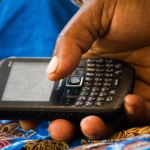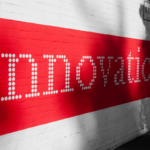It’s no secret that the technology sector is riddled with major gender disparities.
It’s no secret that the technology sector is riddled with major gender disparities. In the United States, discrepancies in employment and pay are so widespread that
tech firms and the
government alike regularly commission reports to evaluate why women comprise less than a quarter of the tech workforce and how this stifles growth. Couple the gender imbalances in the tech sphere with those in the research world – which this
nifty tool tells us is even worse when we look at the percentage of women serving as lead authors in published reports – and it’s not hard to conceive of the challenges faced by women conducting research in the information and communication technologies for development (ICT4D) field. As the
10th conference on ICT4D in Lusaka, Zambia, approaches in May, I’d like to take a moment to highlight the work of several incredibly talented women powering the evidence base for ICT4D.
Through an FHI 360-funded learning agenda project, Annette Brown and I recently created an evidence map that identifies and categorizes impact evaluations across the broad and multi-sectoral beast we term ICT4D. We used a systematic review approach to identify and code 254 impact evaluations across 11 ICT4D intervention types, such as digital identity and technology-assisted learning, that provide evidence in nine sectors. Researchers in the field have been busy – in the last five years the total number of publications providing rigorous evidence in ICT4D increased 311 percent. Below, I take a look at three pieces of evidence from the map and the women behind the work.
Tavneet Suri
In no particular order, first up is Tavneet Suri. For those following the space, especially digital financial services (DFS) and women’s economic empowerment and ICTs, this is a familiar name. Suri, an Associate Professor of Applied Economics at the MIT Sloan School of Management, has produced an extensive body of research on DFS for the poor, as well as microfinance, agricultural growth and political economy (including e-governance). I’ve come to consider her a bit of a rock star, a sentiment reinforced by her infinitely quotable 2017 congressional testimony on how new technologies aid women’s economic participation.
Suri and Jack provided resounding evidence supporting claims that mobile product is not only convenient, it can be an effective tool for assisting people out of poverty.
Our evidence map includes two published articles by Suri, and her co-author Billy Jack, both of which focus on the impact of M-PESA in Kenya, the wildly popular Safaricom product largely credited with catalyzing the mobile money revolution a decade ago. Suri and Jack’s latest article from December 2016, “
The long-run poverty and gender impacts of mobile money,” caused quite a stir amongst the usual DFS circles, and well beyond. Not only was the research published in
Science, outside of the normal stomping ground of ICT4D impact studies and development studies more broadly, but it also provided resounding evidence supporting claims that mobile money advocates have been making for years – that a mobile money product is not only convenient, it can be an effective tool for assisting people out of poverty.
In the 2016 article, Suri and Jack build on their previous work and data collection efforts, using a fairly unique data set on individual and household characteristics from five household panel surveys conducted between 2008 and 2014. The authors use this data to measure changes in three main outcomes: 1) average consumption per person in a household and household poverty rates, 2) physical and financial wealth, and 3) occupational choices and migration. To measure the impact of M-PESA, the authors take an approach that examines changes in access to the service, as opposed to adoption of the service. The analysis compares the set of outcomes for households that saw relatively large increases in access to M-PESA agents between 2008 and 2010 with the set of outcomes for households that experienced relatively small increases in access to agents over the same period.
Access to M-PESA agents reduced both extreme poverty (less than $1.25 consumption a day) and general poverty ($2.00 per day) significantly.
Suri has noted that the findings took her by surprise: the analysis reveals that access to M-PESA agents reduced both extreme poverty (less than $1.25 consumption a day) and general poverty ($2.00 per day) significantly, effectively lifting an estimated 194,000 households, or 2 percent of Kenyan households, out of extreme poverty. Notably, the authors find that these results were driven by female-headed households, for whom effects were more than twice the average. Additionally, female-headed households in areas with increasing M-PESA agent density realized a 22 percent rise in savings and an estimated 185,000 women switched from largely subsistence farming to business retail as their main occupation. The authors offer several possible explanations of the impact pathways at work and point out that, as opposed to other resource-intensive and hard-to-scale financial inclusion efforts, this simple, market-driven product has the potential to directly boost economic wellbeing.
Look for more work from Suri in the future examining mobile money impacts in Pakistan, Tanzania and Uganda.
Michele Ybarra
Michele Ybarra is a distinguished researcher in the public health field with an impressive set of research activities and publications examining health issues for adolescents, domestically and internationally. Currently President and Research Director at the Center for Innovative Public Health Research, she has frequently crossed-over into the ICT field, and occasionally to ICT4D, to develop and test several SMS-messaging and internet-based education and intervention programs. Her work explores critical and sensitive issues for adolescent’s wellbeing and mental health, spanning the realms of sexual education, HIV/AIDs, cyberbullying, smoking cessation, violence in new media and LGBTQ studies.
Ybarra and her co-authors designed a highly contextualized internet-based program to deliver HIV prevention and healthy sexuality education in Uganda and conducted an RCT to measure its impact in four secondary schools.
Three of Ybarra’s publications show up in our evidence map – a small slice of her wider work that has over
6,300 citations (via Research Gate). Ybarra, et al.’s 2013
PLOS ONE article, “
Adolescent abstinence and unprotected sex in CyberSenga, an internet-based HIV prevention program: Randomized clinical trial of efficacy,” reports findings from her research in technology-assisted learning. In this study, Ybarra and her team of co-authors designed a highly contextualized internet-based program to deliver HIV prevention and healthy sexuality education in Uganda and conducted a randomized control trial (RCT) to measure its impact in four secondary schools. The training program,
CyberSenga, delivers four versions of an online curriculum designed to be completed in five one-hour modules over five weeks. Similar to other online-based learning programs, the program sought to take advantage of several potential benefits of this online delivery mode, including its ability to reach a wide audience at low cost and, in the case of sensitive and stigmatized topics, the ability to provide a neutral, presumably anonymous and judgement-free space.
In the RCT design, an intervention group of adolescents received the CyberSenga training and a control group received the usual HIV education offered at their schools. Half of the intervention group was further randomized to take a booster CyberSenga course four months following the initial training. The authors report muted results for the primary outcomes – condom use and abstinence levels six months after the intervention – with no statistically significant difference between students completing CyberSenga versus those who did not take the training. Ybarra, et al. did detect differences in the secondary outcomes which focused on short-term effects of the training (three months as opposed to six months after the intervention) and the booster treatment, noting that the intervention group was slightly more likely to be abstinent than the control group at three months following the intervention. Students in the booster group reported higher rates of abstinence in the longer-term and sexually active youth reported lower rates of unprotected sex. A later publication on CyberSenga, examining information, motivation and behavior, does find positive treatment results for information and motivation.
Ybarra’s article offers a chance to point to the imperative to publish all findings, even if expected results don’t materialize.
Ybarra’s article, one in a string of publications, offers a chance to point to the imperative to publish all findings, even if expected results don’t materialize, as well as an interesting look at the readiness of some contexts for the online-based learning format employed. Ybarra describes the necessity of including both a digital skills-building module in the training and providing a helper onsite to assist students who were largely unfamiliar with online navigation or computer-use, despite the fact that a minimal skill-level was a requirement for inclusion in the intervention. Buried in the article, Ybarra also notes an important aspect of the study that undoubtedly caused a costly logistical nightmare for the study team – since two schools lacked an internet connection, computers and electricity, the study set-up ‘mobile cafes’ at all of the schools, using routers powered by car batteries. These work-arounds introduce questions on the ease of equitably scaling the CyberSenga implementation model and online format when skills and infrastructure are still lacking. Alternative delivery formats for the wealth of content would be worth exploring.
Jenny Aker
Last, and in no way least, Jenny Aker is arguably one of the most prominent and versatile researchers leading the search for evidence in ICT4D. Aker, an Associate Professor of Development Economics at the Fletcher School and Department of Economics at Tufts University, has the highest number of publications appearing in our evidence map, by far. Her contributions to the evidence base span not only different types of ICT4D interventions – digital infrastructure, digital literacy, digital inclusion, DFS and digital information services – but also outcomes in education, economic growth, democracy and agriculture. It’s easy to discern that she’s an impact evaluation whiz and has a forte for developing approaches that examine a seemingly endless list of potential outcomes. During a (semi-successful) attempt to audit her graduate course in 2010, I remember being pleasantly surprised and inspired by her applicability of econometrics to real-world challenges. Right around the same time, her influential article (with over 400 citations on Google Scholar) on the impact of cell-tower rollout on agricultural price dispersions in Niger appeared in American Economic Journal: Applied Economics and the publications have continued to come in a steady stream since.
Aker and her co-authors examine how different mediums and combinations of information dissemination and citizen reporting can impact voter turnout and the demand for political accountability.
Aker’s latest article from 2017, “
Is information power? Using mobile phones and free newspapers during an election in Mozambique,” builds on previous work to investigate another tool in the ICT4D arsenal: low cost SMS messages to push educational information to citizens and pull information from them on potential electoral problems. Aker and her co-authors Paul Collier and Pedro Vicente examine how different mediums and combinations of information dissemination and citizen reporting can impact voter turnout and the demand for political accountability in Mozambique, a context where participation in elections plummeted dramatically from 90 percent in 1994 to 36 percent in 2004.
The authors devised a field experiment with three main interventions: 1) civic education through a door-to-door campaign and five subsequent daily SMS messages, 2) a hotline approach inviting citizens to report electoral problems via SMS short-code to be verified by correspondents and reported back to voters in the same location, and 3) civic education through distribution of a free independent newspaper @Verdade, which also sponsored a national hotline. Each intervention was assigned to randomly sampled eligible polling locations within five kilometers of a cell tower in four provinces. The team combined data sets from official electoral results, administrative records at polling stations, and baseline and endline surveys to conduct analysis.
Each of the three treatments increased the level of trust and information about the election and each increased voter turnout by five percentage points compared to the control group.
The authors find that each of the three treatments increased the level of trust and information about the election and each increased voter turnout by five percentage points compared to the control group. Interestingly, the experiment did not show any statistically significant difference between the three treatments in increasing voter turnout, implying they were all equally effective. The newspaper intervention, however, did produce some notable results in other areas: it shifted the vote toward the incumbents and against the challengers, slightly increased the demand for political accountability, and decreased the number and intensity of electoral problems. Given the similar effect sizes in voter turnout between treatment groups and the likely significant differences in costs between an SMS campaign and publication of a newspaper, a cost analysis would have proven beneficial to further gauge the merits of each approach. The authors do note that the @Verdade newspaper is an ongoing publication – unique in its context – and point to the encouraging nature of the results given the typically low costs of SMS.
This list could go well beyond three women and continue on with accomplishments and publications from Catie Bailard (political science), Ana Dammert (economics), Mercyline Kamande (economics) and Stine Lund (health), each featuring multiple points of evidence in our map. As the evidence base for ICT4D continues to climb, here’s to more clever and curious women bringing in diverse voices and approaches from around the world to lead the charge.
Photo credit: Tavneet Suri, used with permission
Sharing is caring!



